#Jordan Mechner
Text

Kaileena by vznnry
#kaileena#empress of time#prince of persia series#prince of persia#jordan mechner#broderbund#pinup art#ai artwork#ai artist#ai art#video games#video game vixens#vznnry
148 notes
·
View notes
Text
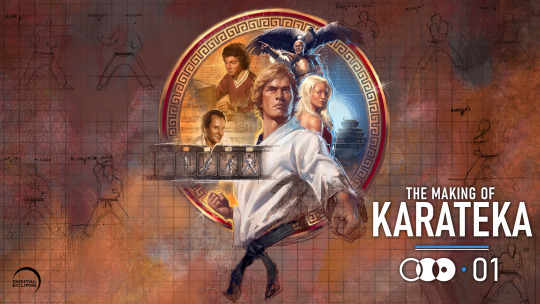
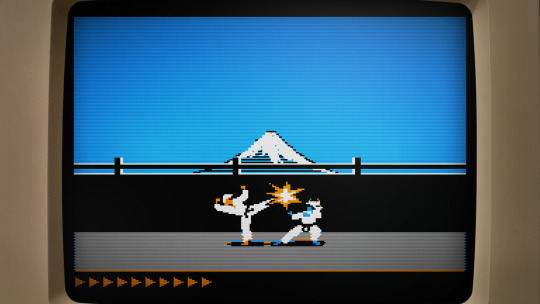
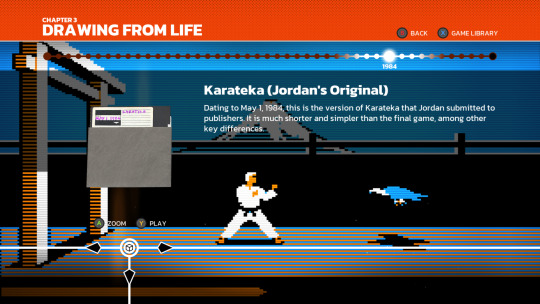


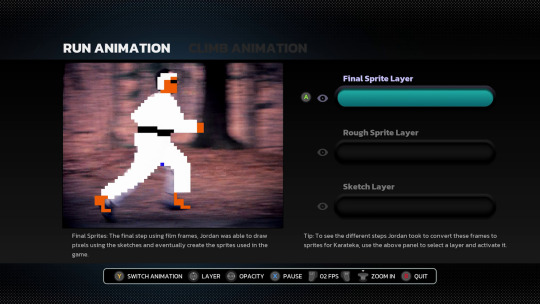
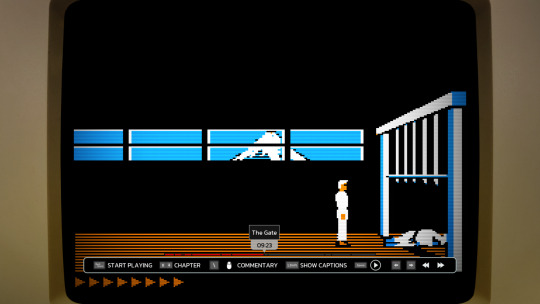
I never played Karateka in the 80s, but as a big fan of Prince of Persia and Jordan Mechner's journals, I was stoked to hear that an interactive documentary about Jordan's prototypical cinematic platformer was in the works by Digital Eclipse.
Released this week, The Making of Karateka on the surface looks like any other game you buy through Steam ($20, Windows-only), GOG, or whichever favorite store or console you prefer (available also for Xbox, PS4/5, Switch). Once the thing loads though, you really get 3 things: a documentary, the original Karateka, and a new remaster.
The documentary part is an audio-visual slideshow retelling Jordan's development story starting with his teenage years pitching his earlier title Deathbounce to the publishing house Brøderbund. It's an interesting look into the iterative process, seen through correspondence letters, journal entries, and many playable builds at various stages of completion. After we reach the eventual rejection of that title, Jordan comes back with a prototype of a visual-narrative experience unseen on home computers. We get to follow Karateka's full life cycle from pre- to post-production, ending with the conception of its sequel (which eventually turned into Prince of Persia). It's a real treasure trove! Fellow pixel artists will appreciate the many graph-paper sketches and interactive overlays of final game sprites compared to rotoscoped outlines and filmed footage. There are also video segments, from a comprehensive breakdown of the music to interviews with other developers reflecting on the impact Jordan's games had on their careers. You'll even encounter a fan letter signed by the one and only "John Romero, Disciple of the Great Jordan and worshipper of the Magnificent Mechner!" (I kid you not, you can't make this stuff up).
Perhaps just as crucial for an interactive documentary like this, you can launch any of the floppy disks in the emulator, trying out various iterations and ports of Karateka.

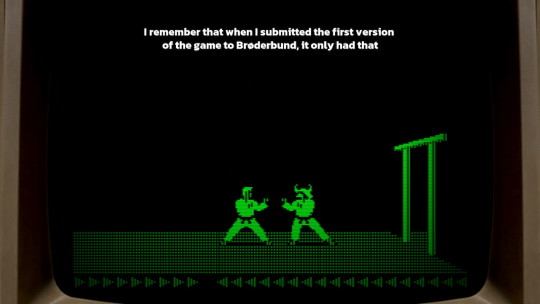
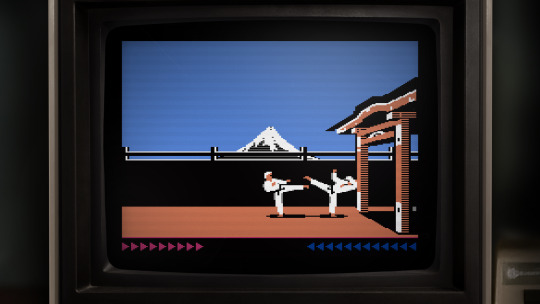
The emulation is fantastic and lets you fiddle with display settings (monochrome or color display, scanlines, pixel perfect or zoomed) as well as enhance the frame rate. You can even rewind the many deaths you will face if you've never played the game before (like me). If you spend some more time obsessing over the weird artifacts of the Apple II hi-res graphics, you might even go down the rabbit hole of realizing that on the Apple II you didn't really paint colors as much as you used different monochrome dithering patterns that the graphics display would then turn into 4 different hues. A fascinating learning experience if you include some of your own research online!
youtube
Add to this the Commodore 64 and the Atari 8-bit versions to compare how the graphics got adapted across the earlier ports and you have a nice way to relieve the mid-80s with a bit of help from modern emulation (I did beat the C64 version without rewinding though!). I'd love to see more art from the other remakes, especially the 16-bit Atari ST port, but I understand their decision to omit playable versions of those due to the lower quality on the gameplay side of the translations.
This brings us to the final part of the package, the modern remaster. Unlike the 2012 complete reimagining of the game (with 3D graphics and all), Digital Eclipse approached the remake as the ultimate port of the original to an imaginary system along the lines of a 90s VGA PC.

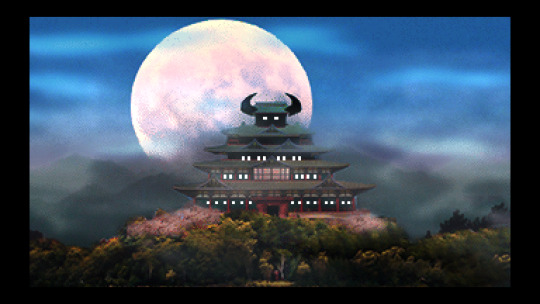


It's well done. Some of the fully-redrawn scenes are a bit overpainted for my taste (I'd prefer a pixel art rendition of the castle than a blurry photographic collage, although there were many games in the 90s that did take this approach), but the in-game graphics are really in style, including the smooth animations that are like one would imagine granted a beefier CPU. It's also a sort of director's cut with previously unseen scenes added, in particular, the battle with the leopard as a clever action-puzzle in the middle. The AI is unfortunately even less challenging than Jordan's implementation. As great as the 6-move fighting system could have been, you yet again resort to simply kicking away opponents as they tirelessly crawl into your range. There isn't even the nuance from the original where you were the one who had to approach some enemies with skilled timing. On the other hand, you now have optional goals and achievements that make the repetitive/easy combat work in your favor (stringing various combos, beating opponents or the level under a time limit …). As the Digital Eclipse president Mike Mika admits at the end of the welcome commentary mode, they didn't manage to achieve their perfect port, but they did come close.
In conclusion, I thoroughly enjoyed playing both the original as well as the remake and while the combat system lacks any sort of depth beneath its stunning animations, Karateka is instead a monumental experience for its presentation. Big characters with personality and realistic motion are displayed through cinematic camera cuts and story vignettes (3 years before Ron Gilbert came up with the word "cutscene"). There are details like animating the unfortunate falling off the cliff at the start of the game, or respectfully bowing to the first guard as they bow in return. Jordan's creative work is precious and worth the attention this release gifts it.
I highly recommend The Making of Karateka to all retro gamers and/or game developers for its immersive documentation which provides an experience that goes beyond the usual video documentaries. It's interactive—just like the subject it's talking about—something I want to see more in the future. And if the $20 by any chance seems high to you, consider that the original retailed at $35 (and that was in 1984 dollars).
youtube
77 notes
·
View notes
Photo

“The exquisite work is the cover art to the original Prince of Persia computer game from 1989. During its creation, artist Robert Florczak asked his friend [actor] Kevin Nealon to model as the Grand Vizier Jaffar, to which Nealon readily agreed.“ (Source)
#Prince of Persia#Apple II#Amiga#DOS#Jordan Mechner#Broderbund#1989#illustrations#cover art#Robert Florczak
164 notes
·
View notes
Text
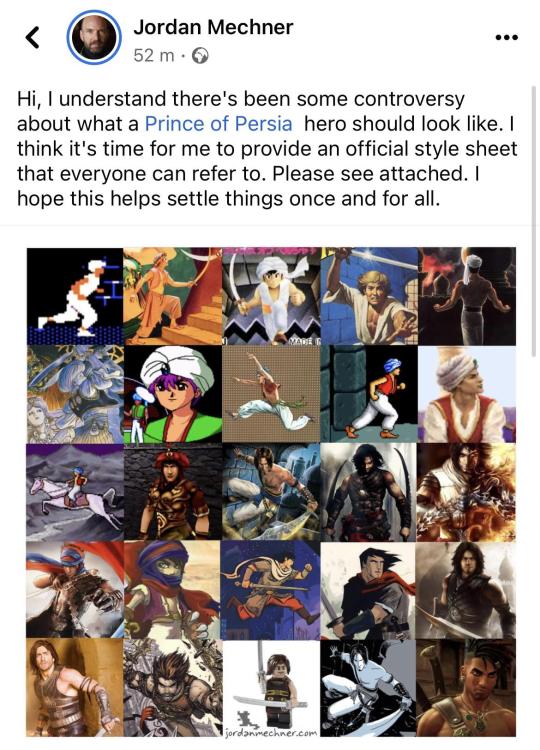
8 notes
·
View notes
Text



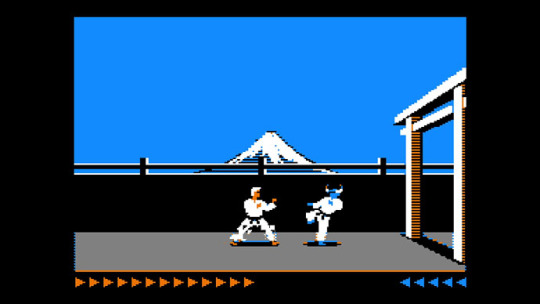




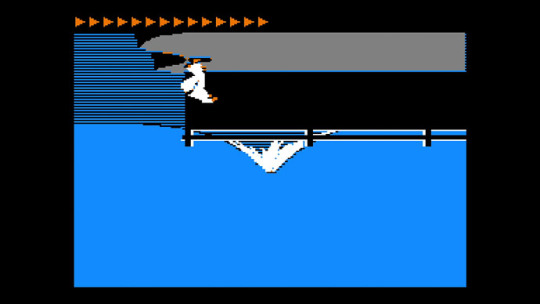
From the Apple II version of Karateka in The Making of Karateka (PC / Steam)
Gameplay session: https://youtu.be/Vvre28OL5Mw
#karateka#the making of karateka#jordan mechner#apple ii#fighting game#fighting games#fgc#video game#video games#fantasy#adventure#game#games#broderbund#digital eclipse#steam#pc gaming#gaming#retro game#retro games#retro gaming#gaming videos#pixel art#rotoscoped#rotoscoping
16 notes
·
View notes
Text
youtube
🎮 Prince of Persia 2 (Super Nintendo)
Complete Gameplay: https://youtu.be/vt_hq5WdrVQ
#PrinceOfPersia2 #PrinceOfPersia #Titus #Psygnosis #Broderbund #Prince #JordanMechner #Ubisoft #SNES #SuperNes #SuperNintendo #SuperFamicom #Nintendo #ニンテンドー #スーパーファミコン #Viciogame #Gameplay #Walkthrough #Playthrough #Longplay #LetsPlay #Game #Videogames #Games
#Prince Of Persia 2#Prince Of Persia#Titus#Psygnosis#Broderbund#Prince#Jordan Mechner#Ubisoft#SNES#Super Nes#Super Nintendo#Super Famicom#Nintendo#ニンテンドー#スーパーファミコン#Viciogame#Gameplay#Walkthrough#Playthrough#Longplay#Let's Play#Game#Videogames#Games#Youtube
2 notes
·
View notes
Photo
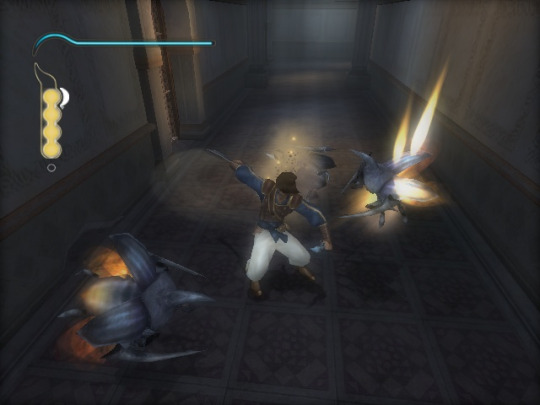
Top 47K - Prince of Persia: The Sands of Time
Join the HG101 gang as they discuss and rank the dramatically successful revival of the classic cinematic platformer.
#Hardcore Gaming 101#Podcast#Top 47858 Games of All Time#Prince of Persia: The Sands of Time#Prince of Persia#Ubisoft Montreal#Ubisoft#Jordan Mechner#Xbox#GameCube#PlayStation 2#action-adventure#platform game#video games
3 notes
·
View notes
Text
0 notes
Text
0 notes
Text
The Making of Karateka (Review)
Over the years a number of people have attempted to provide a history of gaming that goes into detail about games of note and the stories behind them but often they lack the one thing that makes games unique in entertainment – the ability to play them. The team over at Digital Eclipse look like they have found the secret sauce to make this work, and after hitting a home run with the Atari 50…

View On WordPress
0 notes
Text
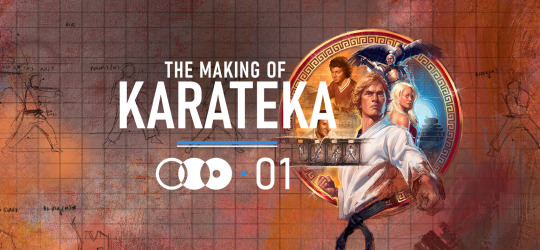
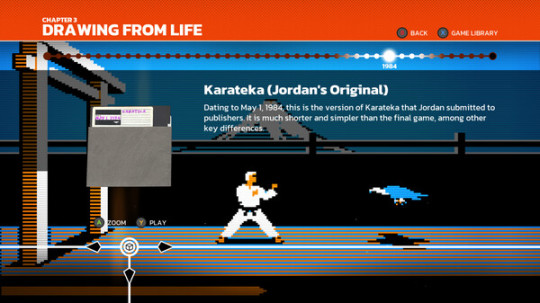
The Making of Karateka (Nintendo Switch)
Developed/Published by: Digital Eclipse
Released: 29/08/2023
Completed: 04/10/2023
Completion: 100% of the museum, beat Karateka (Apple II) beat Karateka remake.
Trophies / Achievements: n/a
If you’ve been following my writing for a while, you’ll know I’ve been playing a ton of old games, and yet I never ever thought to make a point to play Karateka until this release (you can read my thoughts on it here.) Although it has pedigree–its creator Jordan Mechner would go on to make, I think most famously, Prince of Persia–it’s also an Apple II game from 1984, and I think a strange choice to launch a deluxe re-release line, Digital Eclipse’s new “Gold Series'' (outside of there just being a lot of historical material available to pull from.)
Using that material, The Making of Karateka is described by the company as an “interactive documentary” and while it is that, it’s also sort of a digital museum exhibit… and sort of like a Criterion edition of a classic movie if the blu-ray was designed in such a way that it directed you to watch Charlotte et son Jules and read Jean Luc Godard’s treatment before you actually got to watch Breathless.
So it’s kind of an odd sell, really, and the contradictory thing I have to say about it is that I think The Making of Karateka is absolutely brilliant, but I also don’t think it makes a ton of sense as a product (although I do think you should run about and buy it immediately so they make more.) The question that lingers, you see, is what actually makes someone who isn’t retro game-pilled like me pick this up? It’s “The Making Of” to express that there’s something more here than just a re-release of Karateka, but hang on, if you don’t care about Karateka, why do you care about the making of it?
I don’t think it’s something that Digital Eclipse manages to answer, exactly, although what they have produced is beautiful anyway. Clearly using the same front-end as Atari 50 (which could have done with being made a bit more fitting for Karateka? I mean the music sounds exactly the same? ["Though it's not the exact same piece of music"--Pedant Ed.] they’ve created a tour through Jordan Mechner’s life as he started developing video games, from the aborted project Deathbounce, through the release of Karateka and its sequels, and then with some postscript concerning a possible sequel that hints towards what eventually became Prince of Persia.
It is heavily curated (I sort of wanted to read more of Jordan Mechner's diaries than I got to...) and definitely some irrelevancies (sorry, I hate famous talking heads telling me why they like something. It’s not as insightful as you imagine!) and some bits feel a bit… ad-hoc. It also (and I noticed this about Atari 50, too) keeps quite a narrow focus and doesn’t widen context to deepen your understanding. Everything about Spartan X and the path from Prince of Persia to Tomb Raider and beyond that I wrote of in my Karateka write-up is my own, er, research [“*cough* Wikipedia *cough*”--Ed.] and I think that’s a line that’s missing and (honestly) needed to make players understand Karateka’s place in history.
That said, what’s there is still fascinating. It’s simply a matter of curatorial choice. It’s obviously challenging to try and make an Apple II game chime with audiences in 2023, and the choice here was made to not just release Karateka with a “museum” glued on and I’d agree it’s more likely than not in that situation new players don’t go into the game with the right mindset. But I’m not sure that going for the “museum” first angle is correct either. While, yes, you can absolutely click through to a menu and just play Karateka straight away, the experience is absolutely not framed like that, and if you play through the “interactive documentary” in order, you spend a long time playing prototypes of Deathbounce, a game that Jordan Mechner never actually manages to make any good!
It’s a strange priority, and I think it comes from locking the interactive documentary into a strictly chronological format. No one is asking for my advice, but I think there’s a middle-ground here, and I think it’s the Turner Classic Movies system. You know how you used to turn on TCM and then like, Robert Osborne would be there, and he’d explain how this random Humphrey Bogart movie was actually very interesting, and then suddenly you’re watching Sahara and really enjoying it?
I think that’s what I’m imagining. You load this up, you get a nice intro, an explainer, and then you’re playing Karateka. Then once you stop playing it (you don’t have to finish it or anything) it goes straight into the documentary, armed with knowledge of Karateka. Deathbounce makes more sense once you’ve played Karateka. You can actually see the evolution because you know how far he was able to go!
So, yes, my main complaint with The Making of Karateka is simply one of pacing and structure and awkward priorities, the last of which is most exemplified by another example: the inclusion of modern remakes of both Deathbounce and Karateka. Structured as it is, I have to question whether they were worth the time and expense?
(An immediate aside as I discuss this. Retro re-releases are getting wildly disparate in pricing now. Arcade Archives are putting out excellent stand-alone titles for $8, but you also have ININ putting out a bare-bones version of Cannon Dancer for an absurd $30, so it’s actually a bit hard to declare the correct value of a re-release, and how much extra value remakes or improvements offer in terms of how much you can charge versus how much it costs to produce…)
The Deathbounce remake doesn’t feel simply unnecessary, it feels counter-intuitive to the thrust of the documentary. It doesn’t succeed in making Deathbounds good, and the lesson I read from this section is that Mechner spends far too long trying to make a simple arcade game into something more rather than just releasing his first version quickly (which is probably the most fun version!) and just ends up with something that’s kind of a bloated mess, and seemingly far from his goals. The “what if” here is “what if a mess, but it’s 2023.”
The Karateka remake, however, is fantastic… it’s just that it is basically at the end of the entire museum and it wasn’t until I got there that I even knew it existed! Developer Mike Mika has done exactly what he set out to do, which is to make a hyper-smooth version of Karateka that feels like it was developed for an ideal VGA PC in the early 90s, and it includes a brilliant director’s commentary system (there’s an entire director’s commentary for the Apple II Karateka too, but it’s not particularly highlighted, which is a bit of a shame–although you just watch a playthrough for that one).
It makes the game really accessible (perhaps too easy to play, even) but by the time I got to it it felt completely redundant! Sure it’s slow, but Apple II Karateka is perfectly playable, and the director’s commentary in the remake even just recounts a bunch of stuff you’ve already learned. So the whole thing feels like it’s working at cross purposes to the rest of the release–like they could have simply released a remake, but something changed their minds about doing that, and it ended up here as essentially bonus content.
If it really comes down to it, though, this is all just my classic “well, this isn’t exactly how I want it” complaints, and I sincerely hope the “Gold Series” can be sustainable enough to continue–perhaps this is as much a proof of concept as anything. I’m just not sure they actually need to put in this much effort, as counter-intuitive as that sounds.
Will I ever play it again? From an educational standpoint, I sort of wish there was just a folder with all the materials in it to refer to rather than having to walk the halls of the digital museum each time, but there’s stuff here that I’ll return to, absolutely.
Final Thought: Actually, a (much needed!) re-release of MULE, for example, could benefit from an expansive museum and including a remake (which should be front and center if they do, the original is a much harder sell than even Karateka) but for many games–and I think in the end Karateka felt like this for me–a Turner Classic Movies-style release would be enough. Either way, I’m still going to show up every time.
Support Every Game I’ve Finished on ko-fi! You can pick up a digital copy of exp. 2600, a zine featuring all-exclusive writing at my shop, or join as a supporter at just $1 a month and get articles like this a week early.
#gaming#video games#games#txt#text#review#nintendo#nintendo switch#digital eclipse#jordan mechner#karateka#the making of karateka#1985#2023
1 note
·
View note
Text
The Making of Karateka PS5 gameplay 4K - prime impressioni
youtube
Una remastered piena d'amore
#imperodelletenebreblog#recensione#opinioni#youtube#videogiochi#videogames#ps4#review#playstation#ps5#playstation 5#gameplay#karateka#the making of karateka#karateka remastered#jordan mechner#digital eclipse
0 notes
Text
Interactive Documentary “The Making of Karateka” Coming to PC, Consoles on 29 August
Interactive Documentary “The Making of Karateka” Coming to PC, Consoles on 29 August | #retrogaming #Playstation #Xbox #NintendoSwitch #80sAugust
Digital Eclipse has announced that The Making of Karateka is scheduled to release on 29 August for PS4, PS5, SeXbox, Xbone and PC via Steam, GOG, and Epic. The Nintendo Switch will be released later in September.
Described as an “interactive documentary”, The Making of Karateka is the first entry in Digital Eclipse’s Gold Master Series. Players will be able to explore the origins of this Jordan…
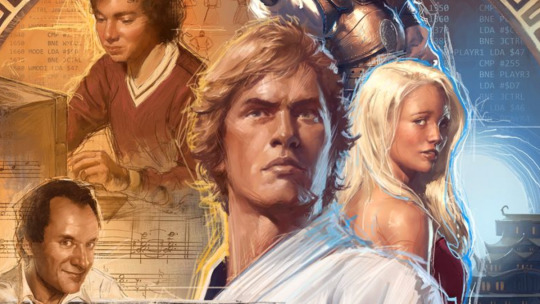
View On WordPress
#80s August#Featured#Jordan Mechner#Nintendo#Playstation#PS4#PS5#Steam#Switch#The Making of Karateka#Xbox One#Xbox Series X
0 notes
Text
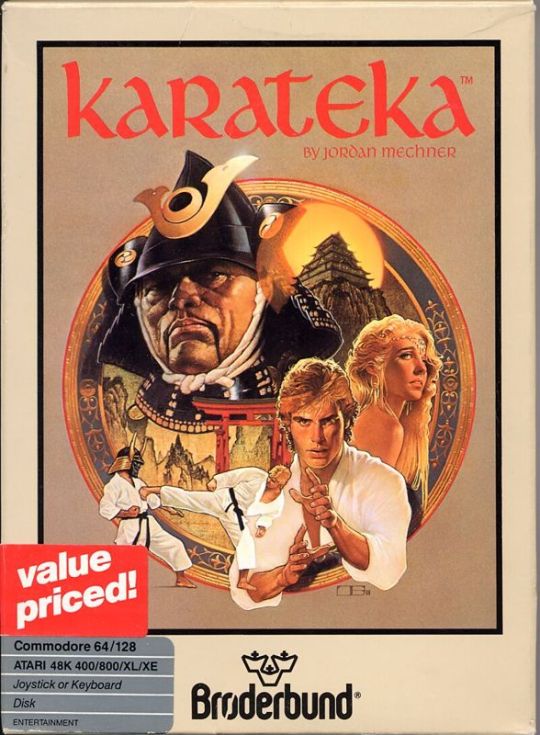

Karateka C64, Atari
-- https://www.mobygames.com/game/1268/karateka/cover/group-10545/cover-22434/
-- https://www.wired.com/2012/02/karateka-remake/
#karateka#commodore 64#c64#atari#game#games#video game#video games#fighting game#fighting games#game art#box art#cover art#jordan mechner#broderbund
3 notes
·
View notes
Text
Karateka is the first of a series of interactive documentaries on Xbox

The folks at Digital Eclipse are doing their part to preserve video game history. Coming off of the successes they had last year with Atari 50 and Teenage Mutant Ninja Turtles: The Cowabunga Collection, they are producing the Gold Master Series, a series of interactive documentaries that will explore the history of games in some fun ways.
First up is a deep dive into Jordan Mechner’s journey to create Karateka, an Apple II game he designed in college. The documentary includes his journals, design documents, and video interviews.
And there’s more! You can play Karateka, in both its published version as well as prototypes. You can even put down the controller and watch the game be played, opting to grab the controller and hop in at any point.
At Digital Eclipse, we’re all about adding quality-of-life features to legacy game titles, so of course you’ll be able to save and load your games anywhere, use Rewind to get out of sub-optimal situations, and choose from a variety of authentic borders and screen filters. Our signature Watch Mode lets you view a playthrough of the game, then jump in at any time and start playing. In The Making of Karateka, we’re expanding on Watch Mode by adding a chapter select function that lets you jump immediately to key gameplay moments, as well as a commentary track from both Jordan and Francis.
-Chris Kohler (Digital Eclipse)
The Making of Karateka will be released later this year on Xbox Series X|S and Xbox One.
Source: Xbox Wire
1 note
·
View note
